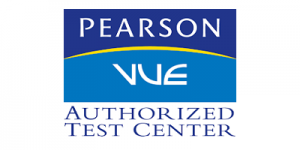- Home
- Cisco Collaboration
- IMPLEMENTING AND OPERATING CISCO COLLABORATION CORE TECHNOLOGIES (CLCOR)
IMPLEMENTING AND OPERATING CISCO COLLABORATION CORE TECHNOLOGIES (CLCOR)
- 0
- Mira
- Sant Cugat, ES
- Descripción del curso:
El curso Implementación de Cisco Collaboration Core Technologies (CLCOR) v1.0 lo ayuda a prepararse para las certificaciones Cisco CCNP Collaboration y CCIE Collaboration, y roles de nivel avanzado centrados en la implementación y operación de soluciones de colaboración Cisco.
Obtendrá el conocimiento y las habilidades necesarias para implementar e implementar tecnologías básicas de colaboración y redes, que incluyen infraestructura y diseño, protocolos, códecs y puntos finales, puerta de enlace XE y recursos de medios del sistema operativo Cisco Internetwork (IOS), control de llamadas, calidad de servicio (QoS) y aplicaciones de colaboración de Cisco adicionales.
Este curso también lo ayuda a prepararse para tomar el examen, Implementando las tecnologías Cisco Collaboration Core (350-801 CLCOR), que forma parte de las nuevas CCNP Collaboration, CCIE Collaboration y Cisco Certified Specialist – Collaboration Core certificaciones. El examen estará disponible a partir del 24 de febrero de 2020.
Prerequisitos:
- Conocimiento práctico de los términos fundamentales de las redes de computadoras, incluidas LAN, WAN, conmutación y enrutamiento
- Conceptos básicos de las interfaces digitales, las redes telefónicas públicas conmutadas (PSTN) y la voz sobre IP (VoIP)
- Conocimiento fundamental de redes convergentes de voz y datos y despliegue de Cisco Unified Communications Manager
Objetivos:
Después de tomar este curso, deberías poder:
- Describe the Cisco Collaboration solutions architecture
- Compare the IP Phone signaling protocols of Session Initiation Protocol (SIP), H323, Media Gateway Control Protocol (MGCP), and Skinny Client Control Protocol (SCCP)
- Integrate and troubleshoot Cisco Unified Communications Manager with LDAP for user synchronization and user authentication
- Implement Cisco Unified Communications Manager provisioning features
- Describe the different codecs and how they are used to transform analogue voice into digital streams
- Describe a dial plan, and explain call routing in Cisco Unified Communications Manager
- Implement Public Switched Telephone Network (PSTN) access using MGCP gateways
- Implement a Cisco gateway for PSTN access
- Configure calling privileges in Cisco Unified Communications Manager
- Implement toll fraud prevention
- Implement globalized call routing within a Cisco Unified Communications Manager cluster
- Implement and troubleshoot media resources in Cisco Unified Communications Manager
- Describe Cisco Instant Messaging and Presence, including call flows and protocols
- Describe and configure endpoints and commonly required features
- Configure and troubleshoot Cisco Unity Connection integration
- Configure and troubleshoot Cisco Unity Connection call handlers
- Describe how Mobile Remote Access (MRA) is used to allow endpoints to work from outside the company
- Analyze traffic patterns and quality issues in converged IP networks supporting voice, video, and data traffic
- Define QoS and its models
- Implement classification and marking
- Configure classification and marking options on Cisco Catalyst® switches
Beneficios del curso:
Este curso te ayudará a:
- Integrar y solucionar problemas de Cisco Unified Communications Manager con Lightweight Directory Access Protocol (LDAP) para la sincronización y autenticación de usuarios
- Implementar las funciones de aprovisionamiento de Cisco Unified Communications Manager
- Configurar y solucionar problemas de puntos finales de colaboración
Dirigido a:
Estudiantes que se preparan para tomar la certificación CCNP Collaboration:
- administradores de red
- ingenieros de redes
- ingenieros de sistemas
Contenido del curso:
- Describing the Cisco Collaboration Solutions Architecture
- Exploring Call Signaling over IP Networks Bullet
- Integrating Cisco Unified Communications Manager LDAP
- Implementing Cisco Unified Communications Manager Provisioning Features
- Exploring Codecs
- Describing Dial Plans and Endpoint Addressing
- Implementing MGCP Gateways
- Implementing Voice Gateways
- Configuring Calling Privileges in Cisco Unified Communications Manager
- Implementing Toll Fraud Prevention
- Implementing Globalized Call Routing
- Describing Cisco Instant Messaging and Presence
- Enabling Cisco Jabber®
- Configuring Cisco Unity Connection Integration
- Analyzing Quality Issues in Converged Networks
- Defining QoS and QoS Models
- Implementing Classification and Marking
- Configuring Classification and Marking on Cisco Catalyst Switches
Esquema del laboratorio
- Using Certificates
- Configure IP Network Protocols
- Configure and Troubleshoot Collaboration Endpoints
- Troubleshoot Calling Issues
- Configure and Troubleshoot LDAP Integration in Cisco Unified Communications Manager
- Deploy an IP Phone Through Auto and Manual Registration
- Configure Self-Provisioning
- Configure Batch Provisioning
- Explore the Cisco VoIP Bandwidth Calculator
- Configure Regions and Locations
- Implement Endpoint Addressing and Call Routing
- Implement PSTN Calling Using MGCP Gateways
- Configure and Troubleshoot Integrated Services Digital Network (ISDN) Primary Rate Interface (PRI)
- Examine Cisco IOS Gateway Inbound and Outbound Dial-Peer Functions
- Implement and Troubleshoot Digit Manipulation on a Cisco IOS Gateway
- Configure Calling Privileges
- Implement Toll Fraud Prevention on Cisco Unified Communications Manager (CUCM)
- Implement Globalized Call Routing
- Deploy an On-Premise Cisco Jabber Client for Windows
- Examine the Integration between Unity Connection and CUCM
- Manage Unity Connection Users
- Enterprise Application Integration (EAI): Configure QoS
Duración: 5 días.
INSTRUCTOR
| Lectures | ||
| Duration | ||
| Skill level | ||
| Language | ||
| Students | ||
| Certificate |
CURRICULUM
SECTION 1: INTRODUCTION TO HANDSTANDS
Parents, students and community members are invited to attend this meeting, which discusses educational issues at the high school and its middle and elementary schools. Schools in the Kerrington cluster are: Aldiger, Caramba, Chesterfield, Cutterey, Fraiser, Johnson, Antonio, Lorney Winston, Ramos, and Westford secondary schools
Download pdf Download doc

